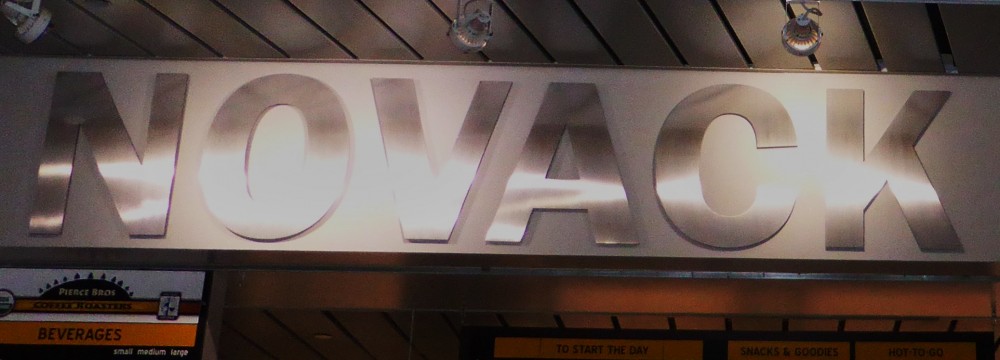In conclusion, Novack Cafe does have some of the traits that Fleming claims are necessary for building an ideal community. For example, it is an open, accessible public space that promotes both spoken and written discourse as well as the small, friendly interactions that Fleming claims are also important for creating a sense of community. Novack also provides a measure of security, providing just enough seclusion and privacy for visitors to feel safe in this environment. Additionally, due to the heterogeneity of the larger Dartmouth community, Novack Cafe offers the variety of viewpoints that Fleming believes is ideal for creating meaningful discourse. Furthermore, large crowds come together in Novack’s small, bound space creating an element of density. This density, as well as the manner in which individuals move through the cafe, result in more random encounters with both friends and strangers.
However, there are also ways in which Novack is different from Fleming’s ideal community. The most obvious of these is its size. Novack is obviously much smaller than the cities, streets, and neighborhoods that Fleming believes are best for promoting meaningful discourse. Novack Cafe also does not have an identity of its own. There are no shared “Novack values” or shared history that visitors can relate to. However, communication and debates still take place in this space to a certain extent, and the amicable bonds formed in Novack translate outward to contribute to the larger Dartmouth community.
Because Novack Cafe provides the opportunity for discourse and positive interactions despite not meeting all of Fleming’s requirements, it might be appropriate to call Novack a semi-social micro-space. The purpose of such a space seems not to be creating its own identity, but rather providing a concentrated place where people of the same community can gather to form and strengthen positive relationships that endure outside of the space. From this, we can conclude that at least in the case of Dartmouth, large spaces aren’t needed to produce the inclusion and democracy generated by Fleming’s streets. Small, inclusive, intimate spaces with high levels of traffic can be just as effective for meeting these goals.
Of course, just as Novack cafe contributes to the larger Dartmouth community, the controlled makeup of the Dartmouth community controls what kind of interactions take place in Novack. This is most likely the case on other college campuses as well. In future research, I may wish to investigate if places like Novack can be found in more “natural” civilian settings. If not, it may be beneficial for city planners to incorporate small, free-use community aggregation spaces that follow the Novack model, or to consider ways in which existing comparable public spaces, such as churches, parks, libraries, community centers and cafes, can be modified to be less exclusionary, draw more traffic, and serve a wider variety of needs, thus promoting more positive interactions and building stronger communities.

